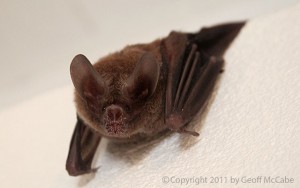
- Home
- Accommodation
- Activities
- Area Info
- Maps
- Photo Galleries
- Real Estate
- Travel
Diet: These bats feed only on the blood of other animals, generally livestock.
Height/Weight: Adults have a head and body length of 7.5 to 9 cm; their weight varies widely.
Found In: Inhabit southern Sonora and Taulipas, Mexico to northern Argentina and Uruguay, rarely above 1,200 m in elevation. Vampire bats generally found in the vicinity of livestock.
Lifespan: 20 to 30 years
 Costa Rica is home to around 200 species of mammals, about half of which are bats. Around 110 different species of Bats live in Costa Rica alone and most of them can been seen in and around the Montezuma landscape by keen nocturnal wildlife watchers. Post sundown these creatures can be seen whizzing by in hordes near the forest and coastal areas. In Costa Rica, these bats are commonly found near livestock raring places. They can live in a variety of habitat types, from tropical forests and tropical deciduous forest to clearings and pastures.
Costa Rica is home to around 200 species of mammals, about half of which are bats. Around 110 different species of Bats live in Costa Rica alone and most of them can been seen in and around the Montezuma landscape by keen nocturnal wildlife watchers. Post sundown these creatures can be seen whizzing by in hordes near the forest and coastal areas. In Costa Rica, these bats are commonly found near livestock raring places. They can live in a variety of habitat types, from tropical forests and tropical deciduous forest to clearings and pastures.
For its 52,000 square kilometers of land, Costa Rica features one of the greatest diversities of bats in the world. Bats play a crucial role in maintaining the balance of the eco system of the region as they disperse seeds and pollen. Several indigenous plants in Costa Rica depend only on bats as their source of pollination. During the day, the animals rest in hollow trees, below palm leaves or wooden roofs.
Soon after sunset these resourceful nocturnal mammals start swooping around trees and abandoned spaces catching huge quantities of mosquitoes and other insects in the process, or feeding on fruits and nectar. Bats condition themselves in the darkness through echoes originating from their ultrasonic cries that human ears fail to catch. Bats are viviparous creatures i.e. the offspring develop inside the mother and are born via live birth. Female bats generally give birth to a pup each year. After birth, the young ones are left together in the communal roost while the parents go out hunting.
All three species of vampire bats are found in Costa Rica and Montezuma. The most common one is the Desmodus rotundus type. In contrast to other bats, vampires can easily crawl and hop on the ground. Their favorite prey are cattle, however they don’t suck but actually lick the blood from the incision they make with their sharp teeth. There is the danger of the cattle contracting rabies that can even kill them though there are no immediate fatal signs at the onset.
Common vampires settle in caves and other cavity like structures in groups or colonies that can have more than 2,000 individuals, however normally their number is lesser than 100. When bothered they tend to retreat into cracks rather than fly away. Vampire bats gather into clusters usually comprising about 8 to 20 females and young ones, which are led by a male. Males will fiercely fight to get a hold on the harems. Harems are known to stay together for long durations of time and forge strong ties, feeding and passing on the blood to one another.
The white-winged vampire bat will sometimes feed on livestock but prefers mammal blood. They will approach a roosting bird by crawling under the branch or limb and lick a bite area for a few moments. If not immediately noticed by the bird, the white-winged vampire will feed for about 15 minutes, sometimes draining its victim to death. They feed on the larger aerials and are not very keen on smaller birds. Common vampire bats are known to leave behind injuries on livestock that are prone to infection or diseases like rabies. The species is responsible for about 100 million dollars worth of livestock damage annually in Central and South America.
The white-winged vampire roosts in caves and hollow trees in clusters of up to 30. The males appear to establish their hierarchy through a quirky manner of threat displays including rising up on their feet, boxing with their closed wings, hissing, and spraying one another with a strange musk like secretion. One of them will ultimately give up. The hairy-legged vampire bat only feeds on the blood of birds. These creatures generally live in caves and hollow trees, mostly solitarily, although several individuals may live in various marked areas of the same cave.
http://costarica.com/wildlife/bats/
Livescience.com – Costa Rica bats use rolled up leaves as hearing aids
The Bat Jungle – Bat zoo/exhibit in Monteverde
My new favorite restaurant, Clandestina is not to be missed by food lovers staying anywhere near to Montezuma. Established in March 2015, Clandestina is the new kid on the block. The Oregon/Tico collaboration is a winner among locals and travelers alike, with artisan craft beers, made onsite by Butterfly Brewing Co. and delicious, exciting […]